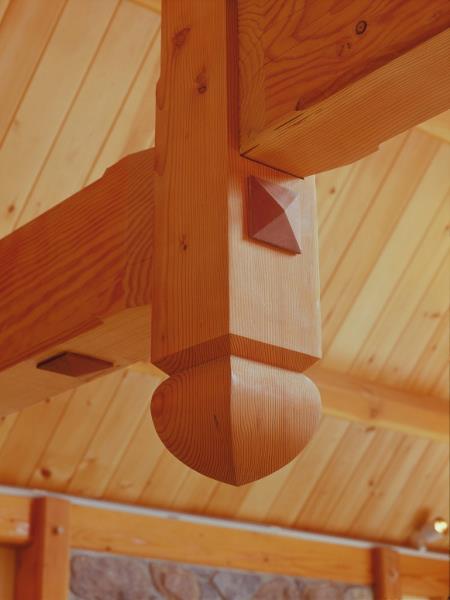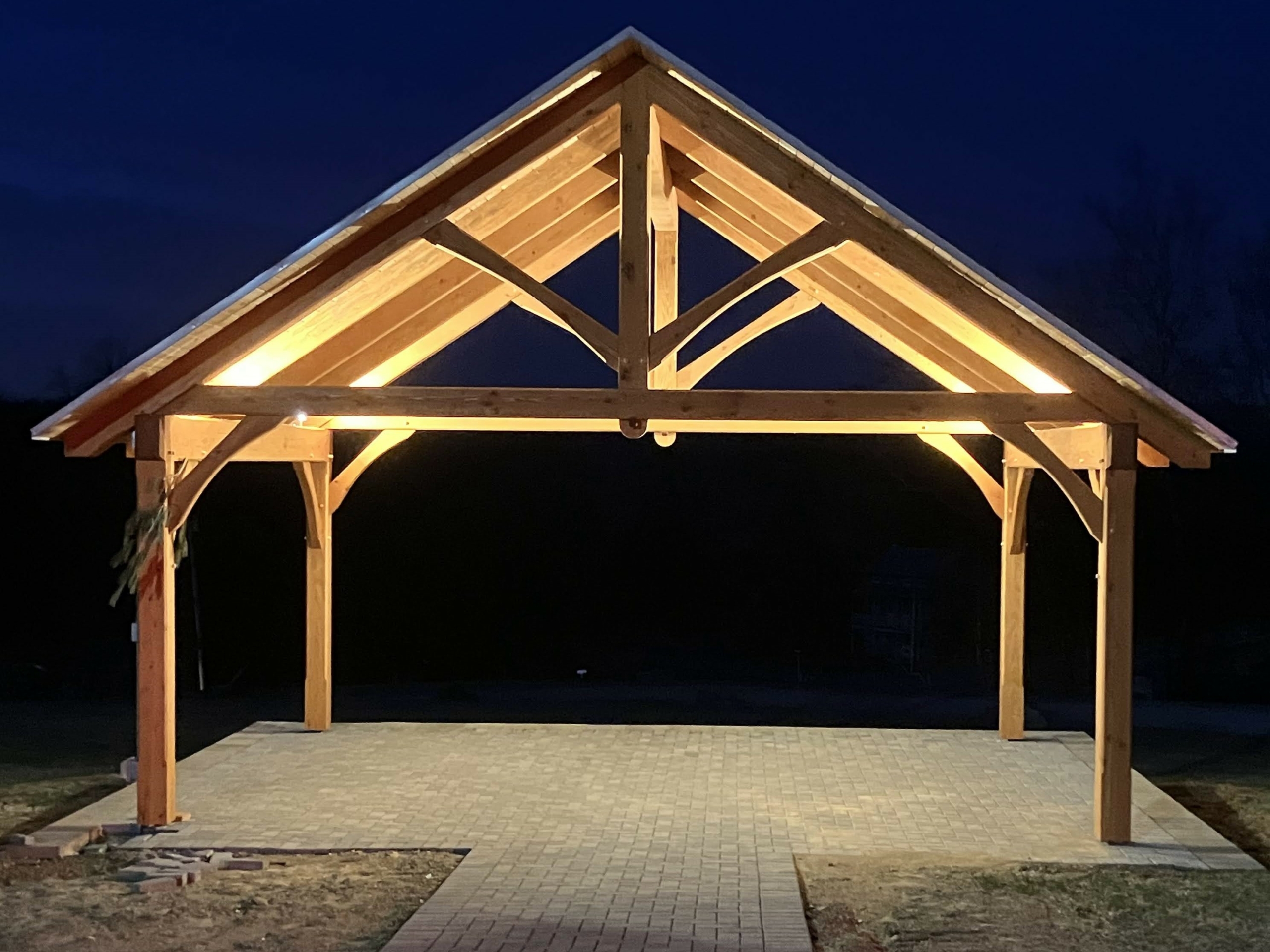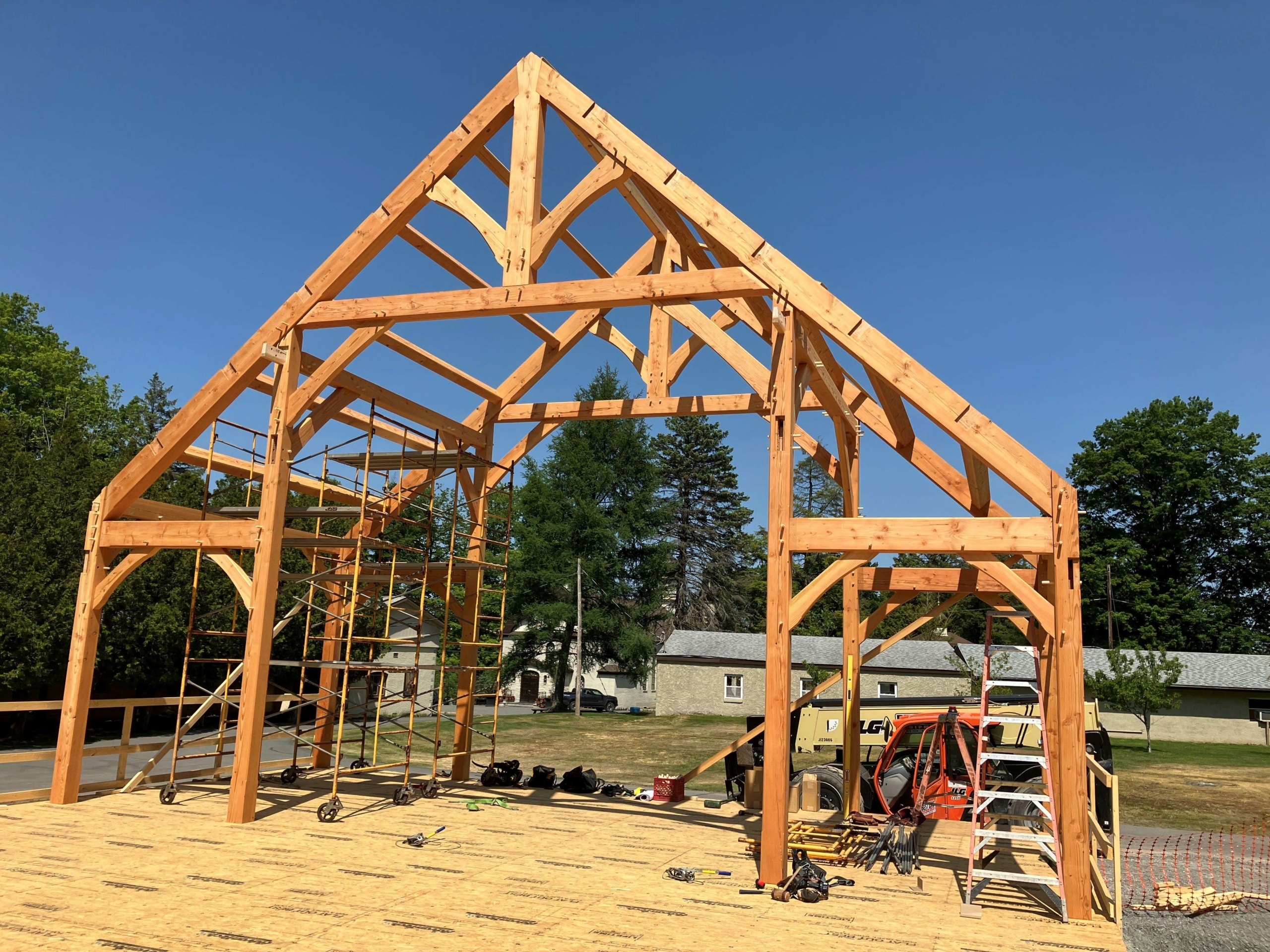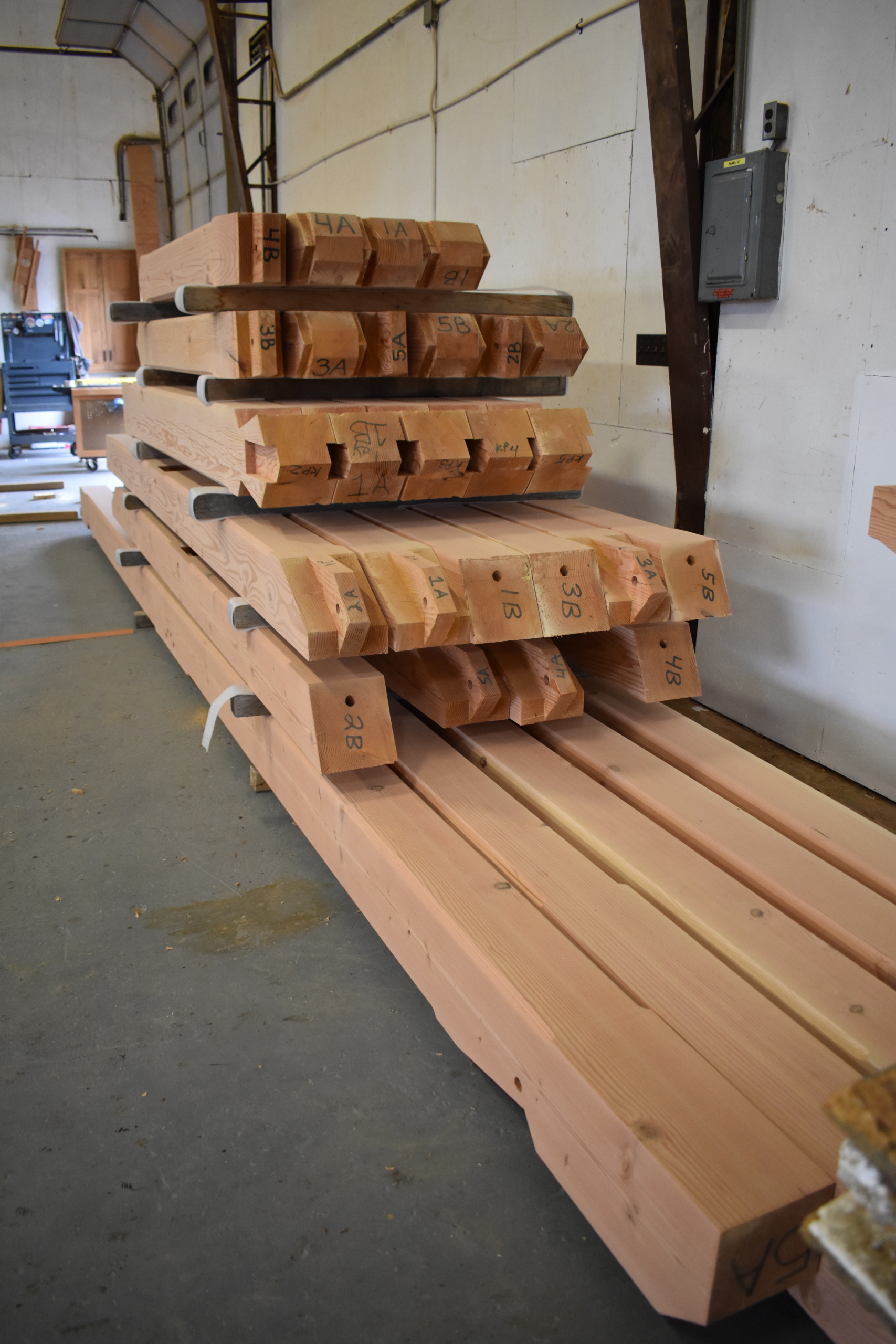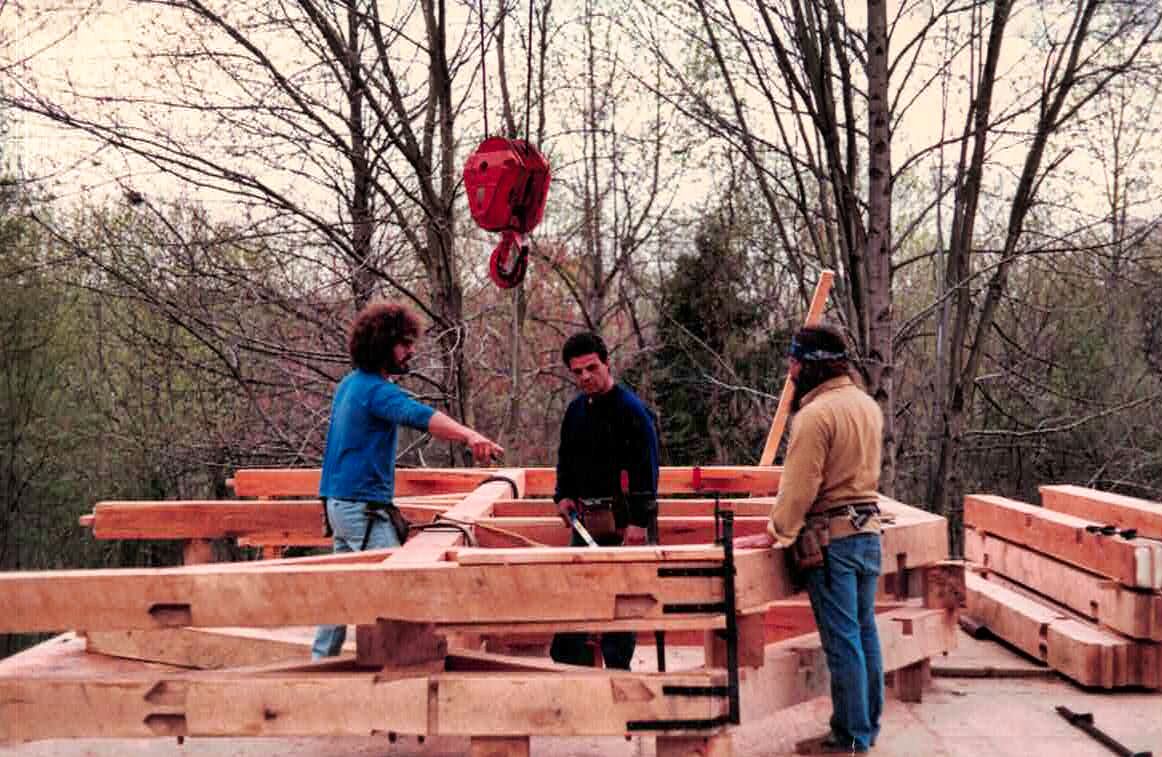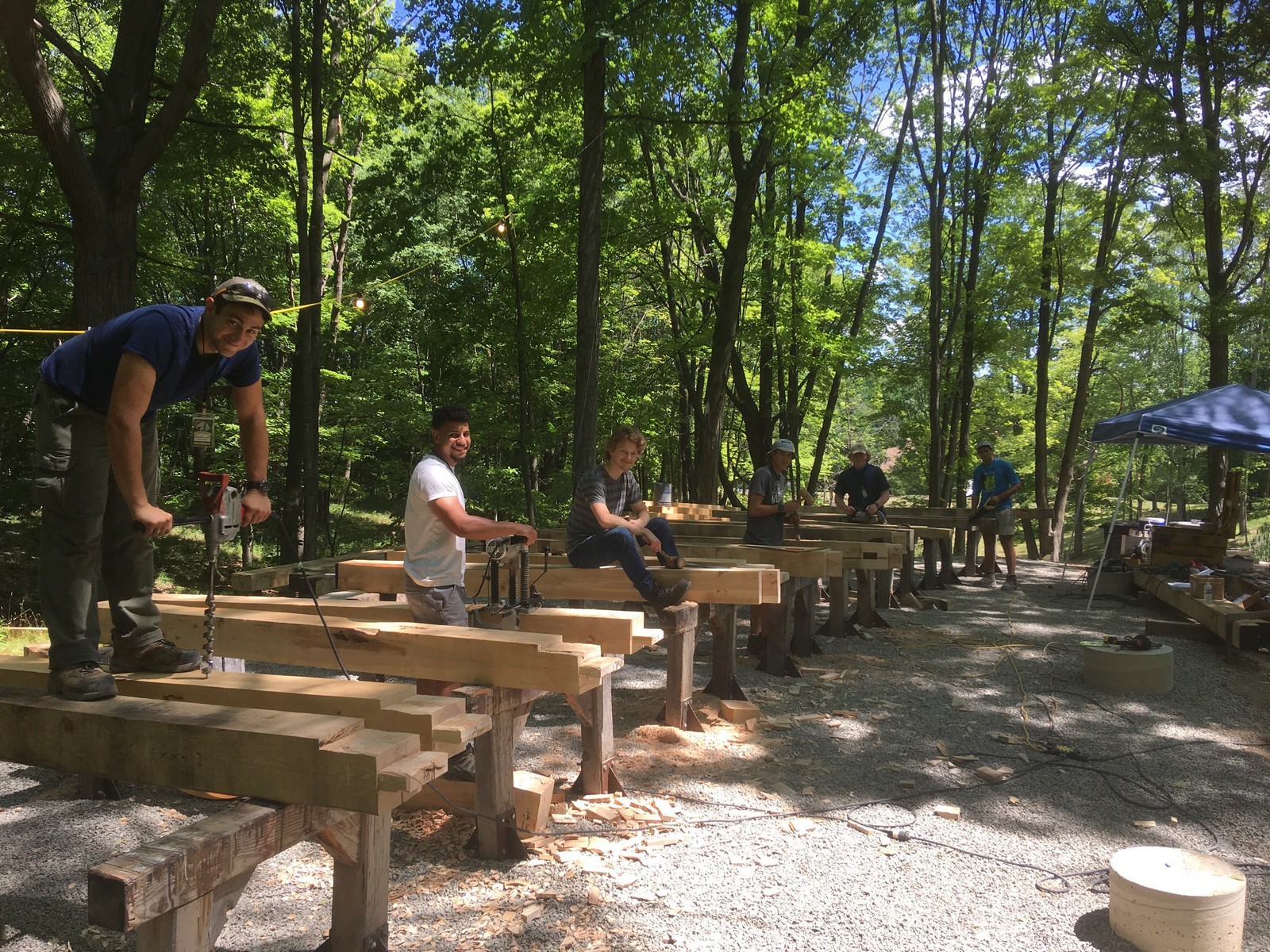In 1995 I received a fold-out postcard of sorts. Actually, it was an invitation from Hans Hundegger to come to Germany as his guest to inspect a heavy timber CNC machine which he wanted to market to North American timber framers. On the card were photographs of the machine itself, as well as of some of the joinery it was capable of producing.
As I held the card in my hand its weight increased. I knew in my bones that this invitation was a harbinger of significant change. Up until this point, here in North America, virtually all companies who practiced timber framing relied on the practiced hand and critical eye of artisans using, for the most part, hand held tools. There were several companies who had built or rigged stationary machines which cut tenons. And there was one company that set up a Rube Goldberg interpretation of Henry Ford’s first assembly line. Other than that, we were all hand crafters.
I accepted the invitation right readily. I’ve always loved machines, even those without handle bars or steering wheels, so I looked forward to this trip with the same intensity that a six year old would feel about a visit to Disney World. There were owners or representatives from seven or eight timber frame companies on that first trip. A driver
met us at the airport in Munich and delivered us to our hotel, which was owned, in whole or in part, by Mr. Hundegger. The next day we were introduced to “the machine” – a glimmering creature measuring about one hundred feet in length and thirty feet at its widest. It was an impressive tool. We were the first Americans to see the “Hundegger” as it was, and still is, called, but by the time we saw it there were already about 600 in use in Germany and other parts of Europe.
The machine was put through its paces for us and it was a marvelous sight to behold. After close to an hour of observing virtually every operation this baby could execute, I felt a huge respect for the man who conceived it and the minds that refined it. I did see, however, a couple things that gave me pause. Our host Mr. Hundegger had scheduled a goodly number of visits to timber frame shops in Germany and Switzerland that manufactured on his machine, so I decided to reserve judgment until I had seen more. After several days of visiting shops, my initial concerns remained firm, but my field of vision had widened.
Back home, when we set the raw timbers on sawhorses, we first inspect all sides for appearance. If all surfaces rate high we know that we can situate that timber in a location where all four sides will be visible. If one side is a bit ugly, we’ll place that face against a wall, and if two adjacent sides show imperfections, it goes in a corner. In none of the shops we visited in Germany did I see that being done. There, the timbers were loaded on a feeder for the machine with no regard to the final orientation of the timber member in the frame.
In our shop, before we take a saw to a timber we score across the grain with a blade. This step prevents the fibers of the wood from “lifting” – or tearing out – as the saw makes its cut. When we bore a hole through a timber, we do it in two steps: almost all the way through from one side first; then we finish from the opposing side to prevent blow-out. The machine showed no concern about either tearing out the grain or blowing it out. When we move timber we’re careful not to scar the surface with the forklift tines. The machine moved the timbers along its line by use of “dogs”, a grabulator of sorts, that dug into the timber to pull or push it along or hold it in place. At some point on my second day of shop visits, it occurred to me that CNC machines did a great job on working homogeneous material – steel, non-ferrous metals and plastics – but not so great on organic material. Almost twenty years later I still feel the same way.
Another thing that concerned me was the “mass production” atmosphere the machine brought about. I believed that timber framing, at a level it should be practiced, was an art form. My mind kept returning to those “Paint-By-Numbers” paint sets that were popular in the late fifties.
Of the men that took that “unveiling” trip to Germany, I am the only one who was not won over. All but one of the companies that were represented on that trip ended up purchasing the machine, while the one exception farms out most of its frames to one or another of the machine companies. As the lead time to receive the machine was nine or so months, and since not all who purchased the machine did so immediately at the end of the trip, it was about two years before the reaction to this change in our craft would fully manifest itself.
Hundegger USA had begun advertising in “Timber Framing, The Quarterly Journal of the Timber Framers Guild”. Mailings touting the potential increase of profits of their CNC machine over traditional hand crafting were mailed out to guild members, and the annual conferences began including Hundegger workshops, sales presentations, and owners’ forums. Articles railing against the machine also began appearing in the Journal. More companies purchased the machine. Battle lines were drawn. Initially, companies who purchased the machine lowered their bid prices drastically and some began offering kit frames for the first time. I remember joking that we’d soon see frames being sold by the pound. Just months later one east coast CNC company advertised timber frame truss systems priced by the board foot.
Things were just a little weird for awhile. Then CNC companies began raising their prices. I suspect that many of them began to realize that to feed the machine they needed to up their advertising and marketing budgets substantially, and that they needed to maintain a huge inventory of timbers. Additionally, owners of the machine soon realized that it was more high maintenance than they had at first suspected. And then there was the monthly “nut” – the lease payment – that had to be paid whether or not they were able to sell enough frames to keep the machine running at full capacity. Many of those companies who purchased the machine lost their best craftsmen, people who I suspect did not want to be handmaidens to the machine. This exodus caused a shortage of people competent enough to raise the mass-produced frames. The transition from custom handcrafting to mass production was probably not an easy or pleasant one for the companies involved.
What animosity or disdain existed early on seems to have dissipated now, or maybe it is just less vocal. I haven’t seen any published numbers on the total number of CNC machines (Hundegger or otherwise) in use in timber framing in North America, but I know I can name well over two dozen who don’t hide the fact that they have the machine. On the other hand, there are companies who portray themselves as hand crafters but who pay a CNC shop to churn out their frames. I remember one CNC company that for years had run full page advertisements in various magazines showing the owner of the company in the shop with a chisel in his hand positioned at a timber. If you’re a mass production company at least be honest about it. Many are. And they have their arguments in place. But I firmly believe that I could refute each and every point. I have visited and scrutinized countless CNC-cut frames and I have yet to see one that is the equal of a frame that has been hand carved by a highly skilled craftsmen. Maybe the machine will continue to evolve and maybe some day there will be no discernible difference. But, for the here and now, I can see the differences from a mile away. OK, well, maybe from fifty feet.
– Tony Zaya
